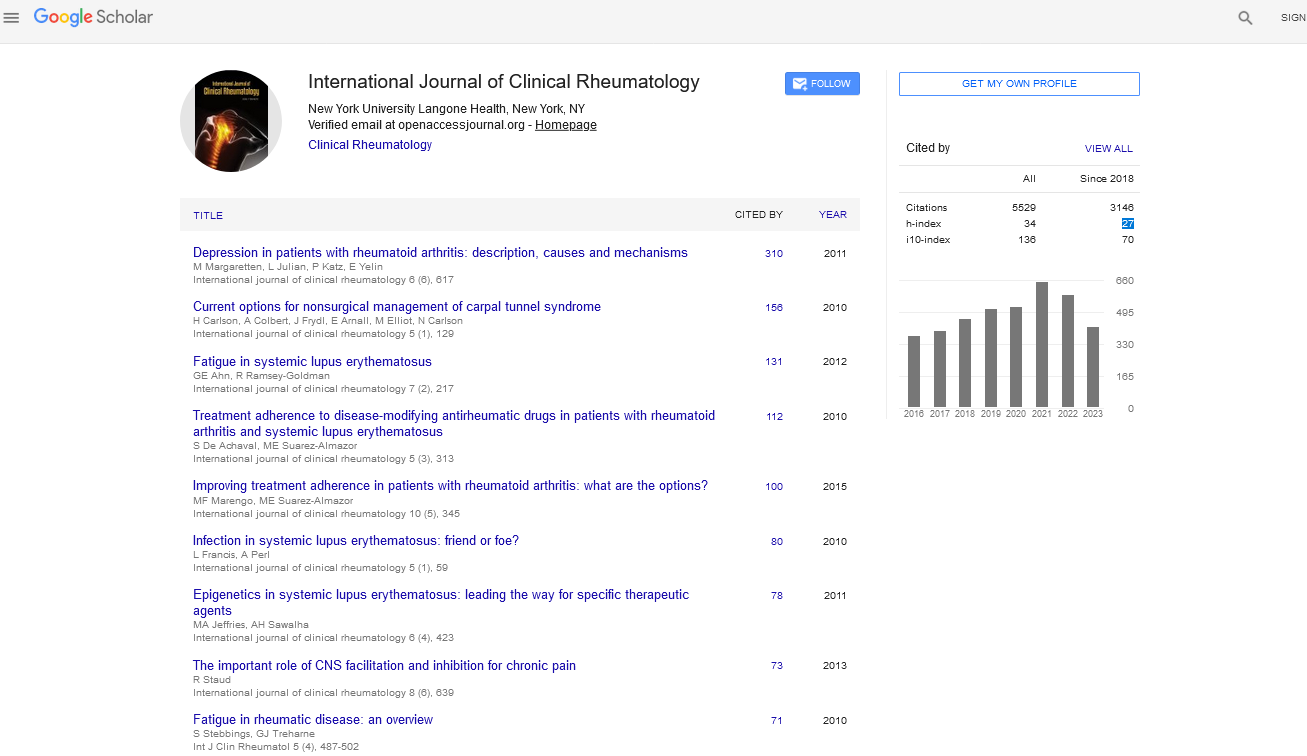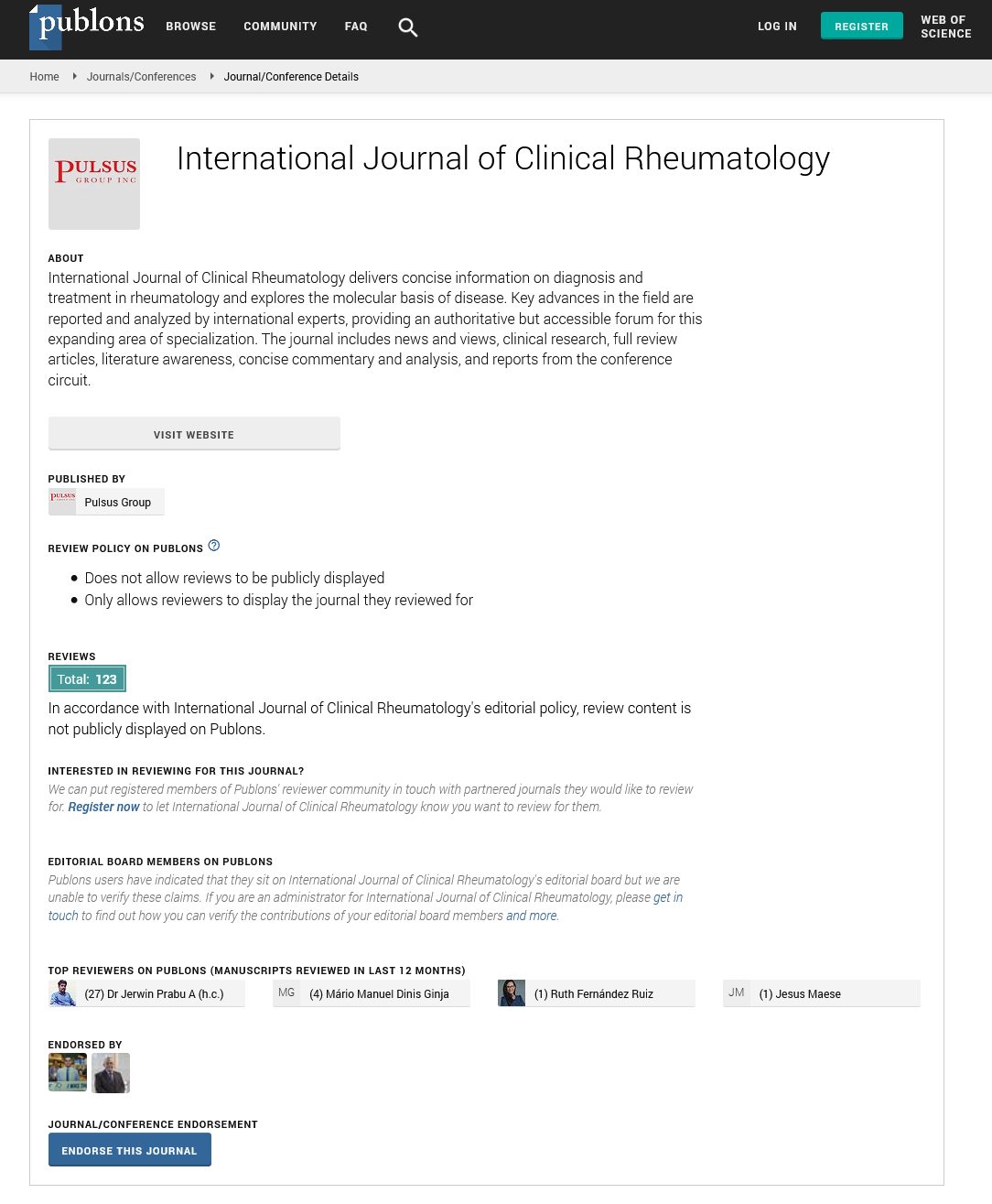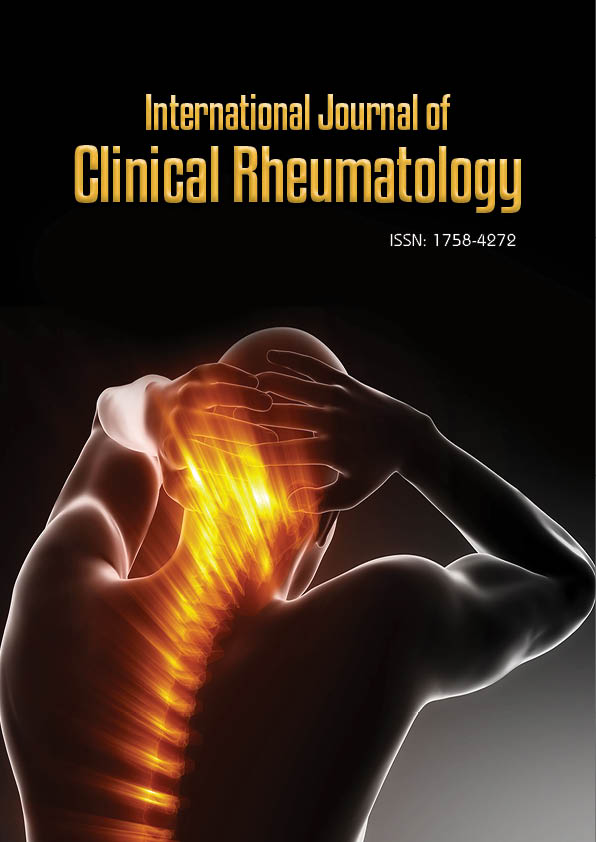Opinion Article - International Journal of Clinical Rheumatology (2022) Volume 17, Issue 9
An extra five years of life an unexpected benefit of osteoporosis treatment
Chung-Yi Chen*
School of Medical and Health Sciences Fooyin University Daliao Dist, Kaohsiung, Taiwan
Received: 01-Sep-2022, Manuscript No. IJCR-22-151; Editor assigned: 02-Sep-2022, PreQC No. IJCR-22-151(PQ); Reviewed: 16-Sep-2022, QC No. IJCR-22-151; Revised: 21-Sep-2022, Manuscript No. IJCR-22- 151(R); Published: 28-Sep-2022; DOI: 10.37532/1758-4272.2022.17(9).151-152
Abstract
Introduction
Australian clinical researchers have noted an extraordinary and unexpected benefit of osteoporosis treatment - that people taking bisphosphonates are not only surviving well, better than people without osteoporosis, they appear to be gaining an extra five years of life.
Out of a total cohort of around 2,000, a sub-group of 121 people were treated with bisphosphonates for an average of 3 years. When compared with other sub-groups taking other forms of treatment [1], such as Vitamin D (with or without calcium) or hormone therapy, the longer life associated with bisphosphonate treatment was marked and clear.
While the results seemed surprisingly good, they are borne out by the data - within the limitations of any study - and appear to apply to men as well as women. When we first looked at the figures, we thought that there had to be a fallacy, that we were missing something [2]. One of the most obvious things might be that these are people who seek medical attention, so may be healthier and live longer. So we compared the bisphosphonate group with people taking Vitamin D and calcium or women on hormone therapy.
Description
The comparison against these other groups of similarly health-aware people simply confirmed that our results were not skewed by that factor. In a group of women with osteoporotic fractures over the age of 75, you would expect 50% to die over a period of five years [3]. Among women in that age group who took bisphosphonates, the death rate dropped to 10%.
Similarly, in a group of younger women, where you would expect 20-25% to die over 5 years, there were no deaths. The data were consistent with about a 5 year survival advantage for people on bisphosphonates. The authors are intrigued by their findings. We speculate that it may have something to do with the fact that bone acts as a repository for toxic heavy metals such as lead and cadmium.
So when people get older, they lose bone. When this happens, these toxic materials are released back into the body and may adversely affect health [4]. By preventing bone loss, bisphosphonates prevent some of this toxic metal release. While we know that this is the case, we don't yet have evidence that this produces the survival benefit.
Osteoporosis is a serious and disabling condition that affects around 2 million Australians. Someone is admitted to hospital with an osteoporotic fracture every 5-6 minutes, averaging 262 hospitalisations each day. It has already been shown by researchers that osteoporotic fractures increase a person's risk of dying, even after relatively minor fractures if that person is elderly.
Osteoporosis is a big societal burden and remains a poorly understood and severely undertreated disease in Australia. Only about 30% of women and 10% of men with osteoporosis receive treatment, which is unacceptable when you consider that people could be helped, and death could be delayed by several years. There is good evidence - even without this study - that treating osteoporosis reduces fractures and reduces mortality. While osteoporosis is clearly under-recognised and under-treated, the findings of this study are important to better understanding the benefits of these treatments and may directly influence doctors' practice. It was unexpected and remarkable to find that not only osteoporosis but also life expectancy appear to be improved for people taking bisphosphonates [5]. Like any pharmaceutical product, bisphosphonates may have unpredictable side effects in a small minority of people and should only be used for their approved purpose.
Conclusion
The Dubbo Osteoporosis Epidemiology Study is an ongoing population-based study that started in 1989 in Dubbo, a city with a population of 32,000 in regional New South Wales. The study cohort is women (1223) and men (898) over the age of 60. Approximately 60% of eligible people were recruited into the study.
References
- Hippisley-Cox J, Coupland C. Unintended effects of statins in men and women in England and Wales: population based cohort study using the QResearch database. BMJ. 340 (2010).
- Tosteson AN, Melton L, Dawson-Hughes B et al. Cost-effective osteoporosis treatment thresholds: the United States perspective. Osteoporos Int. 19, 437-447 (2008).
- Eriksen EF, Díez-Pérez A, Boonen S. Update on long-term treatment with bisphosphonates for postmenopausal osteoporosis: a systematic review. Bone. 58, 126-135 (2014).
- McClung M, Harris ST, Miller PD et al. Bisphosphonate therapy for osteoporosis: benefits, risks, and drug holiday. Am J Med. 126, 13-20 (2013).
- Gnant M, Mlineritsch B, Luschin-Ebengreuth G et al. Adjuvant endocrine therapy plus zoledronic acid in premenopausal women with early-stage breast cancer: 5-year follow-up of the ABCSG-12 bone-mineral density substudy. Lancet Oncol. 9, 840-849 (2008).
Indexed at, Google Scholar, Crossref
Indexed at, Google Scholar, Crossref
Indexed at, Google Scholar, Crossref
Indexed at, Google Scholar, Crossref


